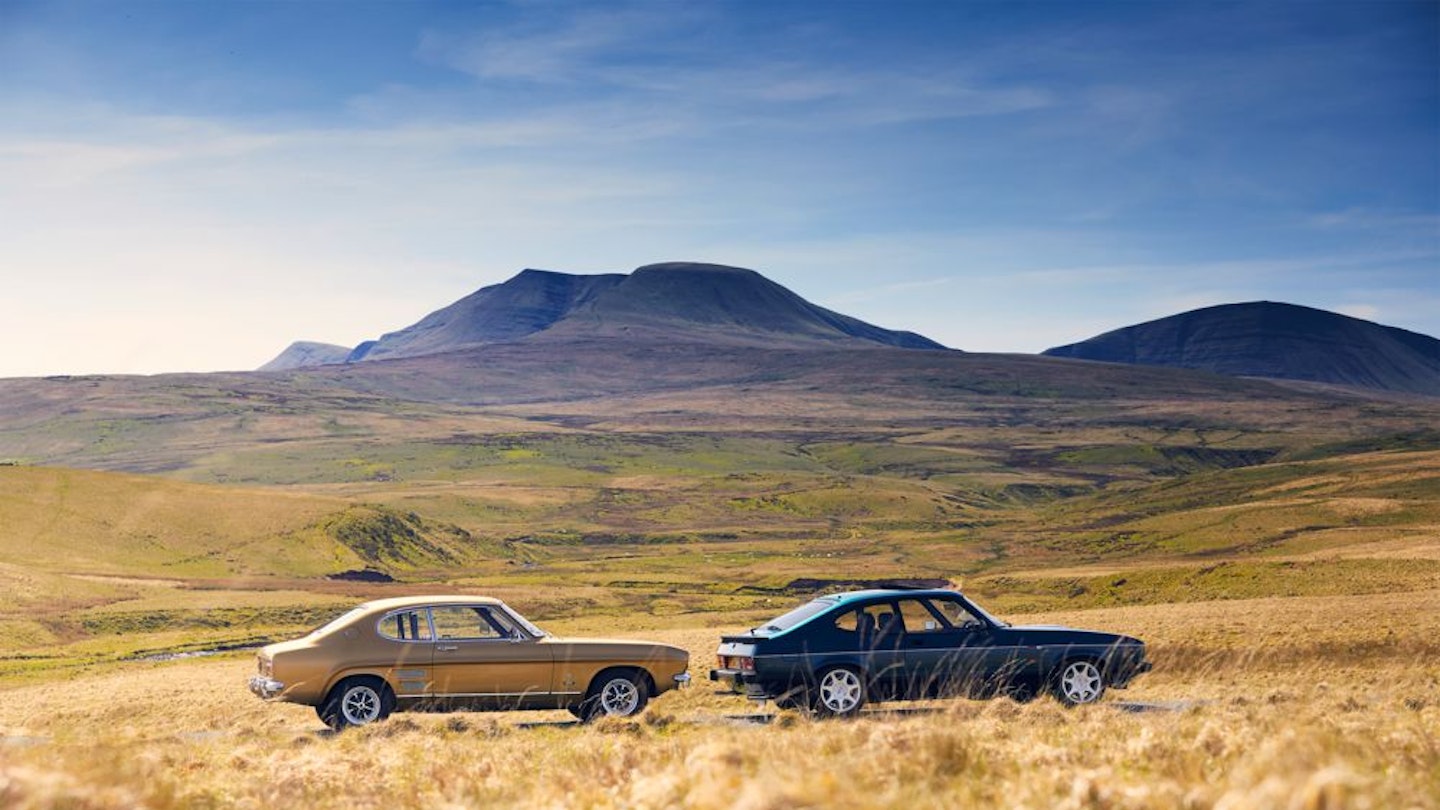CAPRI AT 50
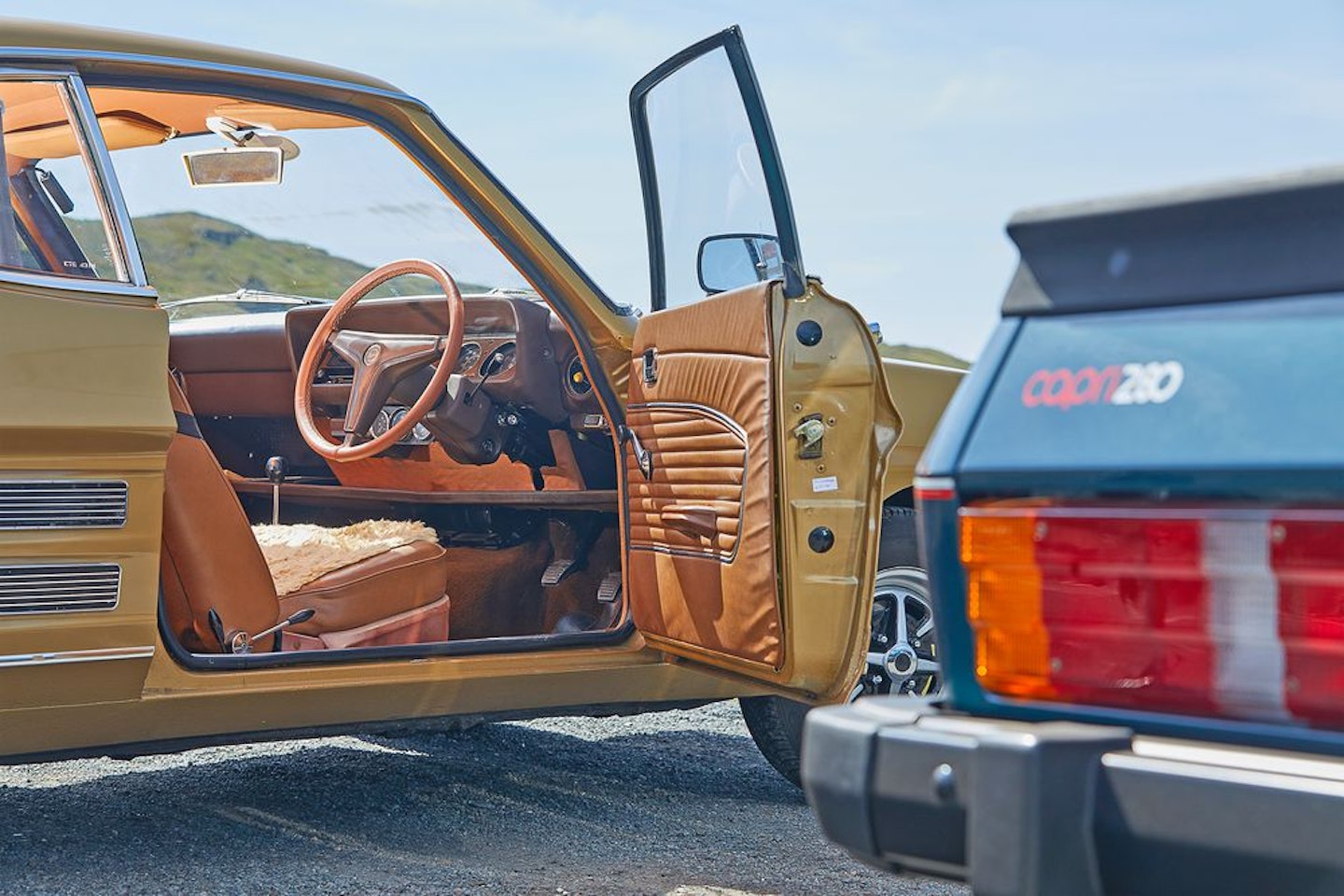 1 of 8
1 of 8CAPRI AT 50
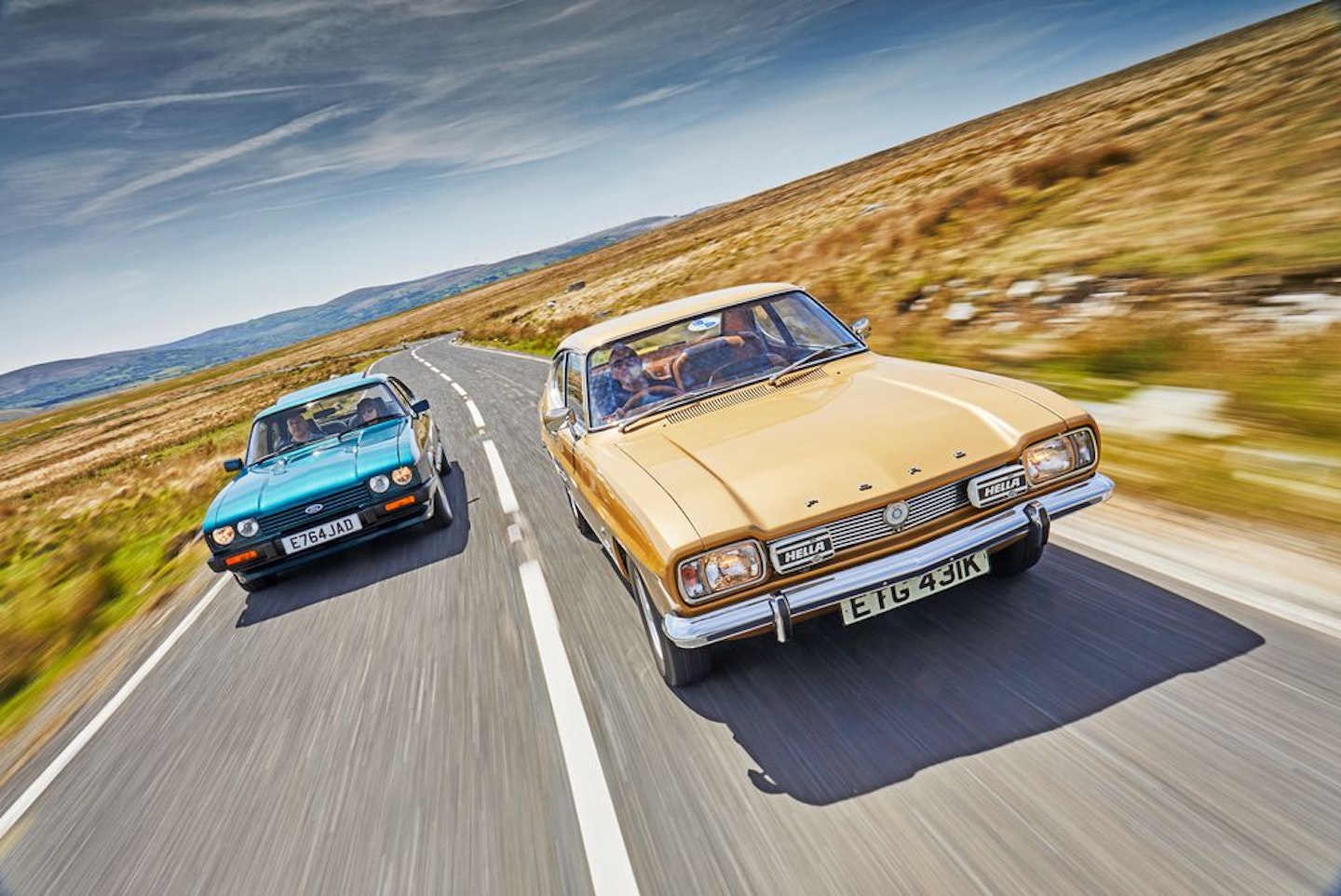 2 of 8
2 of 8CAPRI AT 50
 3 of 8
3 of 8CAPRI AT 50
 4 of 8
4 of 8CAPRI AT 50
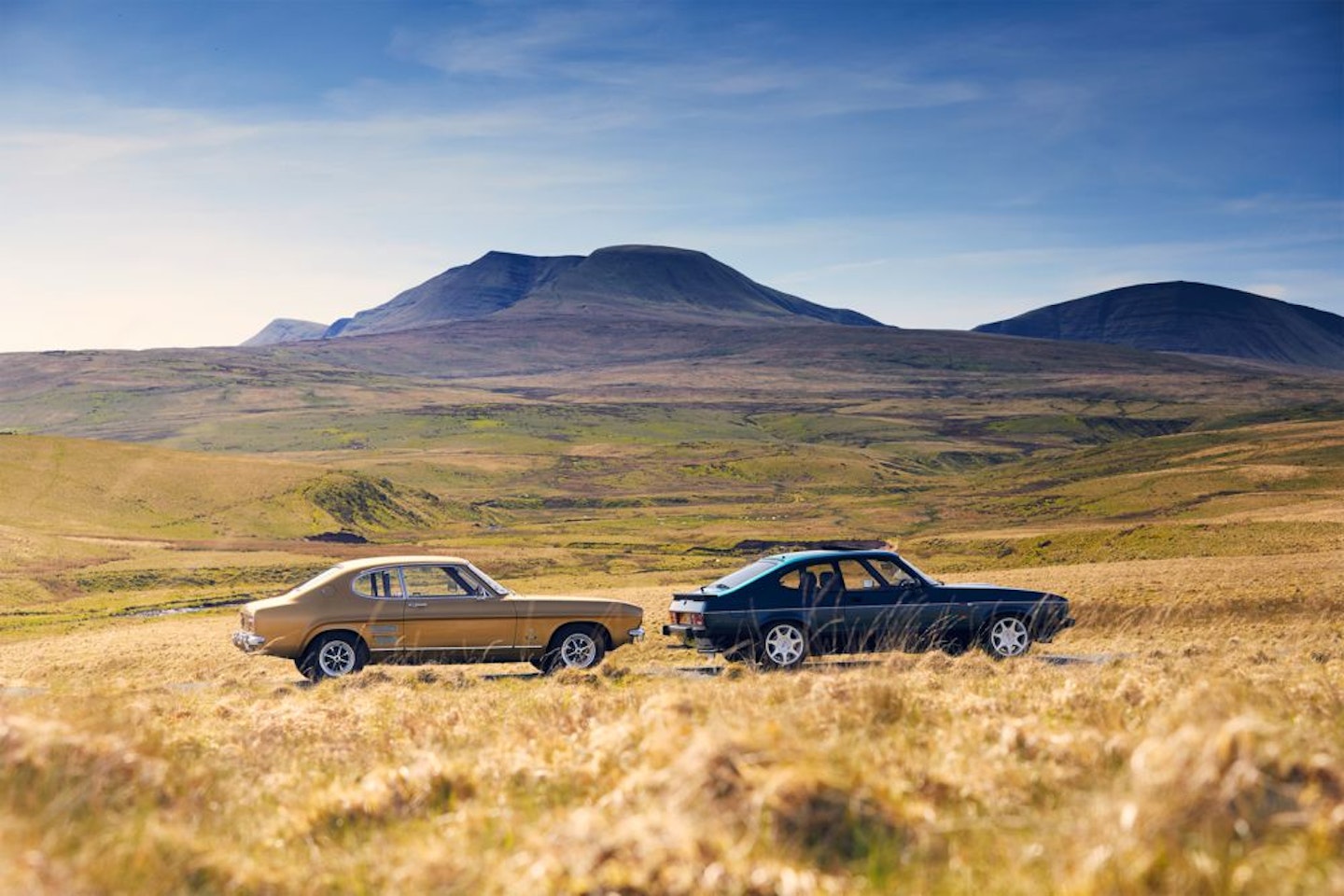 5 of 8
5 of 8CAPRI AT 50
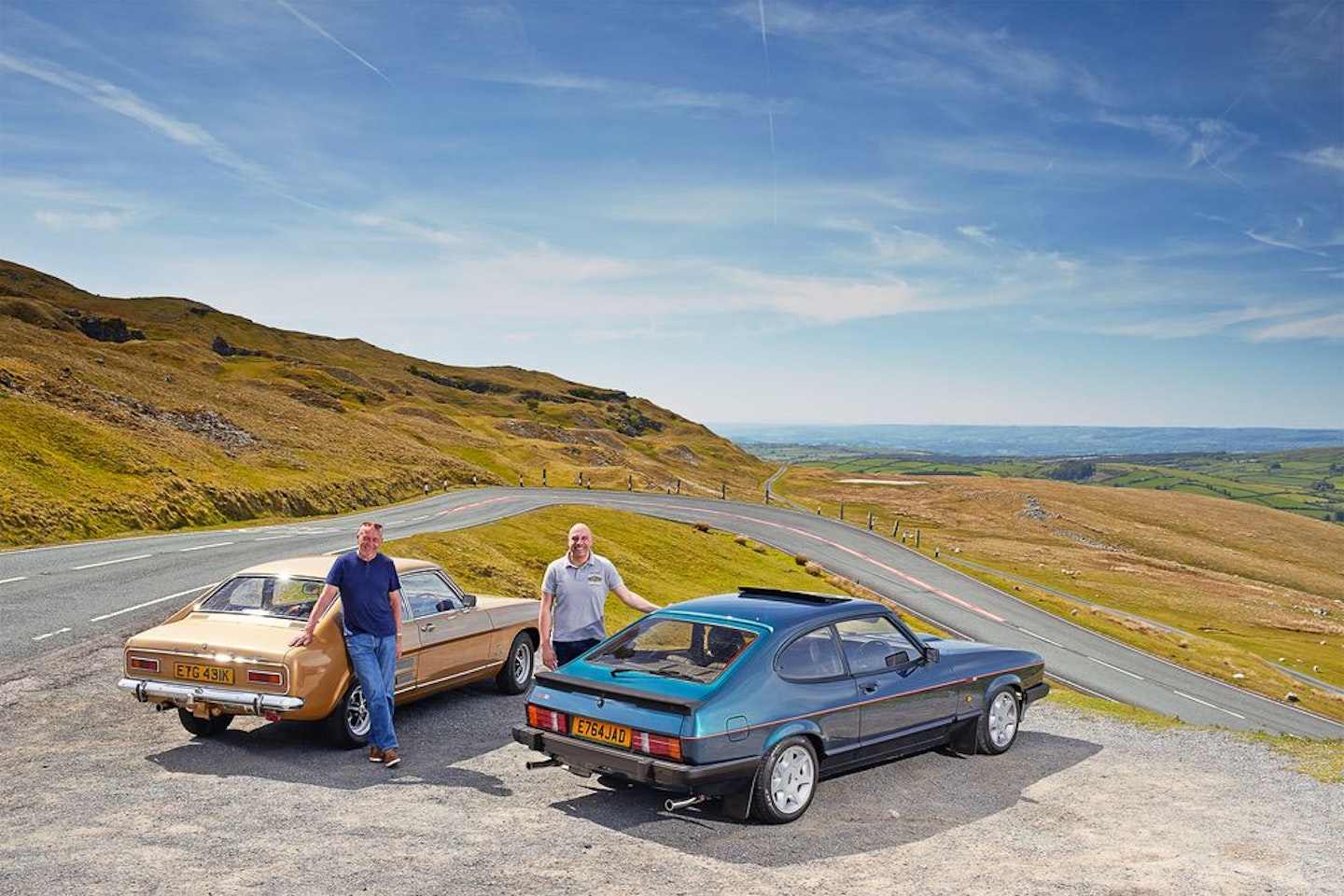 6 of 8
6 of 8CAPRI AT 50
 7 of 8
7 of 8CAPRI AT 50
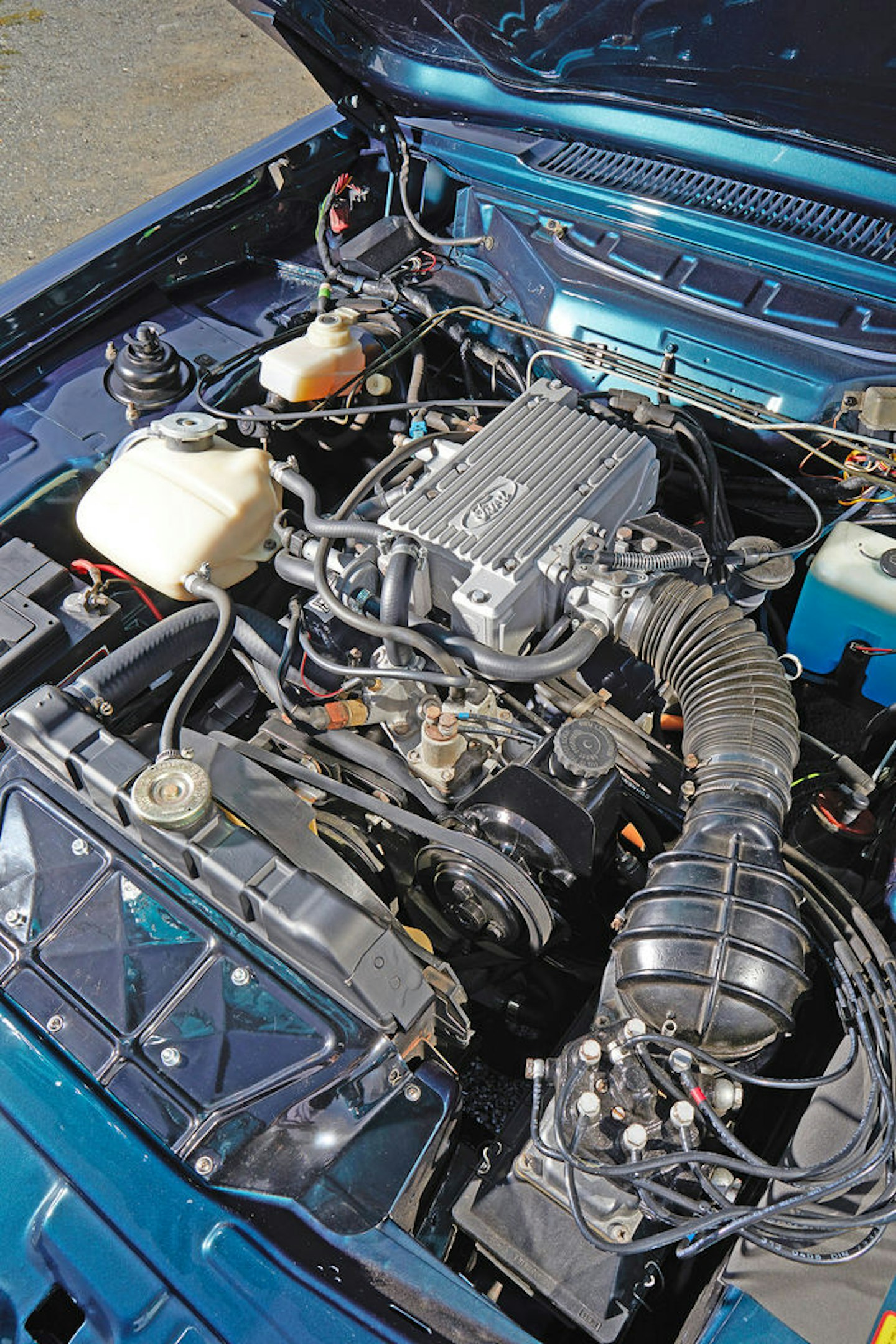 8 of 8
8 of 8CAPRI AT 50
1969 FORD CAPRI 1600 XL
Engine 1599cc/4-cyl/OHV
Power 71bhp@5000rpm
Torque 91lb ft@2800rpm
Gearbox 4-speed manual
Top speed 91mph
0-60mph 17.3 sec
Cost new £689
1987 FORD CAPRI 280
Engine 2792cc/6-cyl/OHV
Power 160bhp@5700rpm
Torque 162lb ft@4300rpm
Gearbox 5-speed manual
Top speed 130mph
0-60mph 7.3 sec
Cost new £11,999
During the late Sixties, all eyes were on the future in a riot of ‘space age’ ideas. From the first flight of a passenger jet capable of flying faster than a rifle bullet to the moment a human footprint appeared on the lunar surface for the very first time, 1969 would forever be associated with technological triumph. Similar thinking took place in the automotive industry, with Italian firms unveiling futuristic styling proposals, the Germans, French and Japanese trying to perfect the rotary engine and British Leyland continuing the development of pioneering new suspension design and interior packaging. The bigwigs at Ford, however, were about to teach everyone a lesson in simplicity.
There was nothing novel under the skin of the new Capri – but Ford had pulled a blinder. Muscular and exotic bodywork draped over conventional mechanicals and a saucy marketing campaigngave it genuine desirability – from the moment the curtain was drawn back at the 1969 Brussels Motor Show to the end of production in December 1986, by which time the Capri had evolved into its most sophisticated incarnation - the 2.8 Injection. The two cars we’ve brought together in Wales are at the opposite ends of the production cycle but within seconds of driving either car, it’s very obvious they are related.

CAPTIVATING COUPÉ
Stateside, Ford had plumped up the American dream with its affordable muscle car Mustang and now it was Europe’s turn. A revolutionary development programme saw engineers, designers and – crucially – marketing experts cooking up what was to become one of the most celebrated models in automotive history to go on sale in the UK. Its impact was simply huge. The public was immediately captivated by the Capri, charmed further still by one of the most game-changing advertising statements ever. Sales of ‘the car you always promised yourself’ were strong from the outset, groovy young things flooding into dealerships across the land. Ford launched the car in Britain with the specific intent of selling it on good looks for an affordable price so UK customers in 1969 were initially offered just the three engines: a 1300cc (£890 in base form) and 1600cc Kent lump, plus the 2-litre Essex V4 from the Corsair. They were further enticed into the showroom with all sorts of bells and whistles and encouraged to spec-up the Capri with anything from spotlights to swanky decals. Initially, the response was even wilder in Germany (where twice as many models were sold in the first three years of production) but the icing on the Dagenham cake arrived in late ’69 with debut of the 3000GT and its muscly bulges, bigger wheels, stiffer suspension and that burly Essex V6.
No such decadence today. I’m taking the wheel of a considerably less fancy 1600cc XL – albeit with a truly remarkable and heart-warming history (see p28). The purity of the original Capri design is accentuated by this lowly model’s lack of bulges and blisters. It’s a pretty shape and without the adornments of the hairy chested models, styling features such as the lines rising up the bonnet from the headlights and those ‘hockey-stick’ creases flowing down each side really stand out. I’m handed the keys and slide onto the vinyl driver’s seat, complete with original furry seat cover from Ford’s period accessories range. You can see why so many were hooked before they even left the showroom – the dashboard is a treat, with lashings of vinyl and a bank of dials. You sit up high in the MkI, but the upright driving position provides a great view down the bonnet and in contrast to many other sporty cars of the period, plenty of space for the whole family. I’m not entirely sure ‘Seventies Dad’ gave a damn, though. The Capri was about looking good – this was a car that made him feel like Sean Connery.
With a flick of the key, the 1599cc Kent bursts eagerly into life and I point the Capri’s long golden nose towards Brecon in the glorious Welsh sunshine. It’s a Monday and the roads we have ahead of us are blissfully empty, so it feels like we have an enormous Tarmac playground all to ourselves.
Foot down, there’s an immediate sense that you’re driving something far more exotic, despite a relatively meagre 71bhp. One imagines many a Capri owner pretended to be Jochen Mass in his 260bhp RS2600 at the Nurburgring.
This particular MkI lacks the aural fizz and outright punch of the fruitier V6 production cars, but it delivers perfectly adequate power that nicely matches the abilities of what lies beneath the XL – well-damped MacPherson strut suspension up front, a live rear axle and front disc brakes. There’s plenty of feel from the Escort-derived rack and pinion steering and I find myself enjoying every bend of our mountain route – but for the tightest corner where things get predictably wallowy. The MkI is certainly more of a precision steer than I imagined. This is 1969, remember, when most family cars had all the composure of a cow in a dinghy.

BANKING ON BROOKLANDS
I pull into our mountain lay-by base and hop across into the 280, which on first impression feels like a very different animal. Recaro seats hugging your bum, the MkIII ‘Brooklands’ (a nickname derived from its unique shade of Brooklands Green) has a much lower, more purposeful driving position and you’re wrapped in a body that has been cleverly evolved to be sleeker, wider and more purposeful than the two previous generations. When ‘Project Carla’ appeared in 1978 as a completed makeover of the Capri II, Ford had intended it to be a bit of a stopgap until it could develop a daintier coupé to combat VW’s Scirocco and the numerous natty Japanese sports cars, by now flooding into showrooms. Despite very few sheet metal changes, Chief Stylist Uwe Bahnsen achieved a skilful transformation – elegant yet retaining an appropriate measure of brawn.
In tune with other cars of the time, the chrome was eliminated and the cleverly styled bonnet edge, pulled down over the head lamps, gave it an air of aggression. By the end of the following year, sales of Ford’s sporting flagship were booming again.
In 1981, the heavy Essex lump was replaced by the fuel-injected Cologne V6 we find under the bonnet of our 280 and you can see why many reckoned it to be the ultimate incarnation. It’s probably the most complete Capri of all, with an extremely pleasing balance of driver appeal, a luxurious interior and that clean, handsome styling.

PEDAL TO THE METAL
It has been said many times before but hoiking out the heavy, lairy old Essex V6 in favour of the refined fuel-injected 2.8-litre Cologne really did transform the top end Capri models. Foot down, our 280 gains momentum smoothly and when provoked, kicks out a virile roar and a delightful rasp from those twin pipes, at the top of its range. Sure, on these Welsh roads a period Peugeot 205 GTi would be vigorously scampering off into the distance but the Capri’s thuggish thump of power and the chirping rear tyres in each bend are more of a challenge to this particular ruffian – the challenge of driving a Capri fast is enthralling and addictive. Such enthusiasm does admittedly expose the old Ford’s rather spongy brakes and soft suspension but it’s forgiven, considering the Capri’s age and more realistic status as a grand tourer. Such was the success of the MkIII makeover, the Capri soldiered on defiantly – and with quite some gusto – far into the Eighties. Ford gave us a variety of engine options to suit all pockets – including the popular 1.6 and 2-litre models and the marketing men got busy again, presenting the public with a range of appealing special editions such as ‘Calypso’, ‘Cameo’, ‘Cabaret’, and later the extremely popular ‘Laser’, at a time when the company had decided to phase out the old ‘L’, ‘GL’ and ‘Ghia’ designations that were seen as appealing only to the company car driver.
Ultimate performance came with the unveiling of the expensive Tickford variant, complete with a 205bhp turbocharged V6, Wilton carpets and ludicrous bodykit. But the hot hatch had embedded itself into the national psyche and the old coupé’s time was up. Born to a society whose soundtrack was Led Zeppelin’s Whole Lotta Love, the Capri was destined to die seventeen years later to the sounds of Stock, Aitken and Waterman. The times had changed – Ford’s big coupé was just too rock and roll.
As we park our two Capris side by side in the afternoon sun, it’s easy to see why millions of blue-oval loving Europeans fell for what began as a little slice of the American dream. Sold in fair numbers around the world, the Capri has predominantly become an icon of UK car culture. With the MkI’s muscle car curves and the MkIII’s handsome, assertive Eighties look, they’re distinctive in the details but both of these cars are one and the same, capturing the essence of how history will remember every generation of the Ford Capri – as a Brit muscle car for the masses.

BUYING A CAPRI - HOW TO GO ABOUT BAGGING A GOOD ONE
There are many Ford clubs out there, so the first step in buying a Capri – whichever generation you hanker after – is to join one or more of them and get to know your fellow enthusiasts. This will be particularly relevant if you’re after a Capri MkI, as there aren’t many out there. Sourcing an example that hasn’t been extensively restored will be harder still so check the quality of the restoration and find out who was responsible for it. Panel availability isn’t great so although the shell is a simple affair with repair work straightforward compared to many classics, try to find a car with the best possible panels and exterior trim you can.
The 1974 Capri II might have been a little plainer in the looks department (despite the addition of a useful tailgate) but it’s marginally better designed and built than its predecessor, while being much more affordable today. It only lasted three years before the MkIII arrived in ’78 and so much like the first-generation car, mechanical bits are much easier to find than the bodywork and trim.
Rust and accident damage are common enemies of the tail-happy Capri MkIII, which to some is the ultimate enthusiast’s choice among all the models. That desirability pushes prices up and in turn increases the chances of a buyer being diddled, so it’s vital to study the paperwork hard and make sure that you’re buying exactly what you are paying for. The 1.3-litre Kent-powered examples are virtually extinct, the Pinto 1.6 and 2-litre versions are easy to live with and although gruff, the Essex V6 models are prized. But if it is
a 2.8-litre fuel-injected Cologne-powered car you’re after, expect to pay big bucks nowadays. Just check inner wings for rot and make sure that the differential isn’t toast, before you do.
